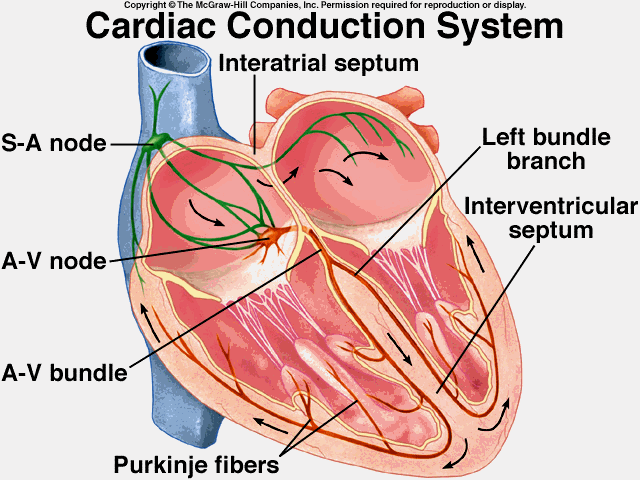Atrioventricular (AV) node

Atrioventricular (AV) node is a cluster of electrical fibers in the HEART that focuses and intensifies the electrical impulses the SINOATRIAL (SA) NODE initiates. The SA node, a cluster of specialized NERVE fibers at the top of the right atrium near the superior VENA CAVA, is the heart’s natural PACEMAKER. It generates a rhythmic electrical impulse that spreads through the myocardial cells of the right atrium. The AV node, located at the base of the right atrium at its juncture with the right ventricle, gathers the impulse and amplifies it, sending it through the BUNDLE OF HIS and into the right and left bundle branches. The electrical impulse gathers STRENGTH as it travels these electrical conduits, culminating in the Purkinje fibers near the base of each ventricle. The impulse then cascades through the myocardial cells of the ventricles, bringing the cells and the ventricles to synchronized contraction. The AV node also can generate a pacing impulse when disease or damage to the heart blocks the SA node’s impulse, though the AV node impulse is considerably weaker and can sustain limited cardiac function for only a short time.
For further discussion of the AV node within the context of cardiovascular structure and function, please see the overview section “The Cardiovascular System.”
See also BUNDLE BRANCH; BUNDLE BRANCH BLOCK; CARDIAC CYCLE; ELECTROCARDIOGRAM (ECG); SICK SINUS SYNDROME.